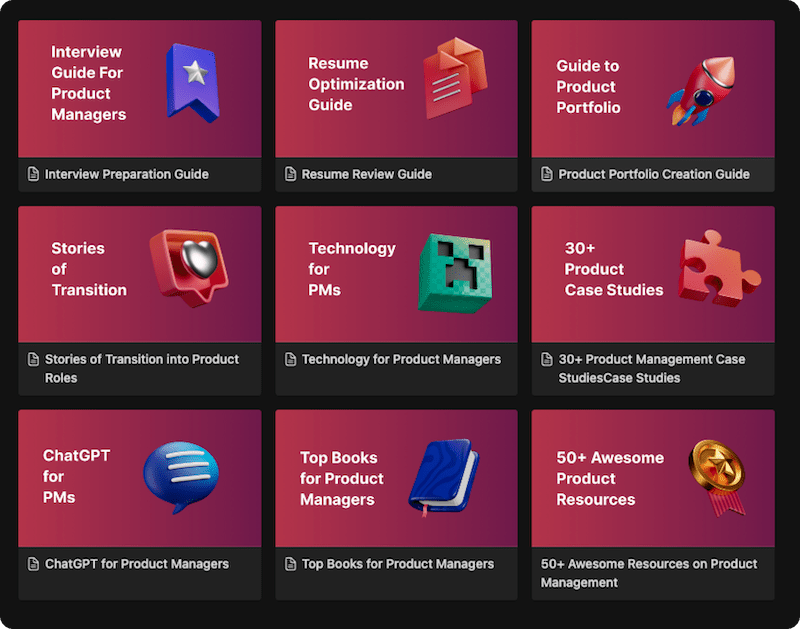Your engineering lead just explained that a seemingly simple feature request will take six months to build because they have to “refactor the core service.” Your marketing team wants to offer a customizable version of your product for enterprise clients, but you’re told it’s “not possible with the current setup.” As a product manager, you’ve just run headfirst into one of the most powerful, yet often invisible, forces shaping your product’s destiny: its Product Architecture.
While the term might sound like something exclusively for engineers, understanding product architecture is a secret weapon for any strategic product manager. It’s the foundational blueprint that dictates your product’s flexibility, speed, cost, and future potential. This guide will demystify product architecture, translating it from a complex engineering concept into a practical framework for product leaders. You’ll learn what it is, the critical trade-offs it involves, and how you can influence it to build better, more scalable products.
Definition & Origin: From Factory Floors to Server Farms
The formal study of product architecture has its roots in manufacturing and industrial design. In a seminal 1995 paper, MIT professor Karl T. Ulrich defined it as “(1) the arrangement of functional elements; (2) the mapping from functional elements to physical components; (3) the specification of the interfaces among interacting physical components.” This framework helped explain why some products were easy to customize and others were not.
For example, the automotive industry pioneered the use of “platforms”—a shared, modular architecture of a chassis and drivetrain upon which many different car models could be built. This dramatically reduced cost and development time. As the world shifted to software, the same principles applied. The debate between a monolithic architecture (one giant, integrated codebase) and a microservices architecture (many small, independent services) is a modern-day manifestation of the same core architectural decisions faced by manufacturers for decades.
Core Benefits: Why Product Architecture Matters to a PM
As a product manager, you don’t need to design the architecture, but you absolutely need to understand and influence it. Architectural decisions made today will have massive consequences for your product tomorrow.
- Enables or Constrains Your Roadmap: The architecture determines what is easy and what is hard to build. A request for high levels of customization might be simple on a modular architecture but nearly impossible on a highly integrated one.
- Impacts Development Speed & Agility: A modular architecture can enable multiple teams to work in parallel on different components, potentially increasing development velocity.
- Determines Product Performance: A tightly integrated architecture can be highly optimized for speed and efficiency, which might be critical for performance-sensitive products like high-frequency trading software or video games.
- Defines Scalability: The architecture dictates how easily the product can handle growth in users, data, and complexity. A poorly architected product will crumble under its own success.
- Drives Cost and Maintenance: The chosen architecture has long-term implications for the cost of development, testing, and ongoing maintenance.
The Core Concepts: Modular vs. Integral Architecture
At the heart of product architecture lies a fundamental choice between two main types: modular and integral. Understanding this trade-off is the key to understanding the entire concept.
### Modular Architecture
A modular architecture features a one-to-one mapping between a product’s functions and its components. The components are independent and interact through standardized, well-defined interfaces.
- The Analogy: A modern desktop PC. The motherboard has standard ports (interfaces) where you can plug in a graphics card, RAM, or a hard drive from different manufacturers. You can easily upgrade or swap one component without affecting the others. Legos are another perfect example.
- Pros:
- Flexibility & Customization: Easy to add, remove, or change components.
- Parallel Development: Different teams can work on different modules simultaneously.
- Easier Maintenance & Updates: A single faulty component can be repaired or replaced.
- Cons:
- Sub-optimal Performance: Standardized interfaces can create performance overhead compared to a custom-designed, integrated system.
- Potential for Bloat: Can become a collection of loosely connected parts rather than a cohesive whole.
### Integral Architecture
An integral architecture features a complex, interwoven mapping between functions and components. A single component might perform multiple functions, and multiple components work together to perform a single function. The interfaces are custom-designed and not standardized.
- The Analogy: An Apple MacBook or a high-performance sports car. The components are not easily user-swappable because they are tightly integrated and optimized to work together for maximum performance and a slim design. Every part is custom-fit.
- Pros:
- High Performance: Can be highly optimized for speed, size, and efficiency.
- Cohesive Design: Often results in a more elegant and seamless user experience.
- Cons:
- Inflexibility: Difficult to change or customize one part without impacting the entire system.
- Complex Design Process: Requires deep coordination across the entire design and engineering team.
- Slower Development: Changes often have cascading effects, slowing down development.
Examples of Product Architecture in Action
The best way to grasp the concept is to see it in different contexts.
| Product | Modular Example | Integral Example | Architectural Implication |
| Software | A Microservices-based App (e.g., Netflix). Each service (user profiles, billing, recommendations) is an independent module. | A Monolithic App. All code for all functions is in a single, tightly coupled codebase. | Netflix can update its recommendation engine without touching the billing service, enabling speed. The monolith may be simpler to deploy initially but harder to change over time. |
| Physical Goods | A customizable travel backpack with add-on pouches and straps. | A high-performance hiking backpack where every strap and pocket is sewn in for optimal weight distribution and durability. | The travel backpack offers flexibility for different trips. The hiking backpack offers superior performance for a specific, demanding task. |
| Food Service | A Subway sandwich. The customer chooses from standard modules (bread, meat, cheese, veggies) to create a custom product. | A gourmet chef’s signature dish. Every ingredient and sauce is precisely chosen and placed to create a single, perfectly balanced experience. | Subway’s modularity allows for mass customization and speed. The chef’s dish is an optimized, unchangeable experience designed for maximum quality. |
The PM’s Role: A 5-Step Guide to Influencing Architecture
As a PM, your role is not to write code but to ensure the chosen architecture aligns with the product and business strategy.
- Clearly Define the Product Vision & Strategy: What are you trying to achieve? Is your core value proposition about performance, customization, or speed to market? Your answer to this question is the most important input for the architecture decision.
- Collaborate to Deconstruct the Product: Work with your engineering and design leads to break the product down into its core functional elements. What must the product do?
- Facilitate the Trade-off Discussion: Lead the conversation about the pros and cons of a modular vs. integral approach in the context of your strategy. Ask questions like, “How important is it for our customers to be able to customize this feature?” or “What are the performance requirements for this workflow?”
- Understand and Clarify the Interfaces: The interfaces are where components connect. As a PM, you need to understand what data and actions pass between different parts of your product, as this often defines the user experience.
- Continuously Re-evaluate: No architecture is forever. As your product scales and your strategy evolves, you must proactively lead conversations about “tech debt” and whether the current architecture is still serving your long-term goals.
Common Mistakes to Avoid
- Ignoring Architecture Entirely: Treating architecture as “just an engineering problem” is a classic PM mistake that leads to major roadmap and performance issues down the line.
- Choosing the Wrong Architecture for Your Strategy: Building a highly integral system when your business model relies on customization and partnerships is a recipe for failure.
- The “Accidental Monolith”: Starting with what seems like a simple, integrated product but failing to plan for future complexity, leading to a tangled mess that is impossible to change.
- Letting Architecture Dictate Product Strategy: The product strategy and customer needs should inform the architecture, not the other way around.
Conclusion
Product architecture is the invisible backbone of your product. It’s a series of foundational decisions that will echo through every sprint, every feature launch, and every strategic pivot you make. While it lives in the domain of engineering, its impact is felt squarely in the domain of product. An architecture that is misaligned with your company’s strategy will create constant friction, while an architecture that is well-chosen will act as a powerful tailwind, accelerating your ability to deliver value to customers.
As a product manager, you don’t need to be an architect, but you must learn to speak their language. You must be the one in the room who constantly connects the technical “how” back to the strategic “why.” By engaging in these conversations, you move beyond being a manager of features and become a true architect of your product’s long-term success, ensuring that the foundation you build today can support the vision you have for tomorrow.
FAQ’s
Product Architecture is the fundamental structure of a product. It defines how the product’s functions are organized into its core components (physical or digital) and how those components interact with each other. It’s the blueprint that determines a product’s flexibility, performance, and scalability.
The two primary types are Modular and Integral. A modular architecture consists of independent components with standard interfaces (like a PC), prioritizing flexibility and customization. An integral architecture consists of tightly interwoven components with custom interfaces (like a MacBook), prioritizing performance and efficiency.
No, the final architectural design is an engineering decision. However, the Product Manager plays a critical role in influencing that decision. The PM is responsible for providing the strategic context—the business goals, customer needs, and desired product attributes (like performance or customizability)—that guides the engineering team to the correct architectural choice.
They are closely related. Product Architecture focuses on the mapping of function to form from a strategic, business, and user perspective (the “what”). Technical Architecture is the next level down; it’s about how that product architecture is implemented using specific technologies, databases, programming languages, and protocols (the “how”).
Yes, but it is often extremely difficult, expensive, and time-consuming. Changing a core product architecture is like trying to change the foundation of a house while you are still living in it. This is why making thoughtful architectural decisions upfront is so critical.
Learn better with active recall quiz
How well do you know What Is Product Architecture? Let’s find out with this quick quiz! (just 10 questions)


